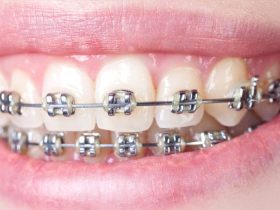Patients starting hormone therapy often wonder when they’ll notice improvements in their symptoms. While some effects appear within days, others take months to develop fully. The timeline varies depending on which symptoms you’re addressing, the type of hormone therapy prescribed, and individual biological factors. Understanding what to expect helps maintain realistic expectations throughout the treatment process.
Initial adjustments
The body responds to hormone therapy immediately, though most people won’t notice noticeable changes immediately. During the first week, hormone levels start rising toward the therapeutic range but haven’t yet stabilized. Some patients report subtle shifts in mood or energy, though these early changes don’t represent the full treatment effect.
During this phase, mild adjustment effects like breast tenderness, slight nausea, or headaches may occur as the body adapts to changing hormone levels. These typically fade within the first week or two. Injection methods often create more pronounced initial effects due to rapid delivery, while patches and oral medications tend to produce more gradual changes. Tracking subtle shifts during this period provides valuable information for your healthcare provider to optimize your treatment plan.
Noticeable results from weeks 2-4
By the second week, most patients notice tangible improvements in certain symptoms. The timeline for specific symptom improvements during this period includes:
- Hot flashes and night sweats – The first reduction typically begins 7-14 days after starting treatment
- Sleep disruption – Improvements often follow hot flash reduction, usually evident by days 10-18
- Mood swings – Initial stabilization frequently begins by week 3
- Energy levels – Gradual improvements starting around weeks 2-3
- Anxiety – Mild reduction in physical symptoms by weeks 3-4
- Vaginal dryness – Early improvements might begin around weeks 3-4
This period provides early validation that the treatment is working, though patience remains important as many symptoms continue improving over subsequent months. Dosage adjustments are sometimes made after the first month based on symptom response and hormone level testing.
Improvements from months 1-3
The first three months mark a period of significant therapeutic gains. By this point, hormone levels have stabilized within the target range, allowing the body’s tissues and systems to respond more consistently. Vasomotor symptoms typically improve by 70-80% for most patients by the three-month mark. Emotional and cognitive benefits become more pronounced as brain function responds to hormonal stabilization.
Urogenital tissues show marked improvement as estrogen gradually restores elasticity, thickness, and lubrication to vaginal tissues. Sexual comfort typically improves substantially. Mood stabilization becomes more consistent, with fewer emotional swings as hormone levels even out. Many patients report clearer thinking and improved concentration by the three-month milestone. The majority of patients confirm that Hormone therapy addresses their symptoms.
Effects deepen within 3-6 months
The three to six-month period brings further refinement of benefits. Effects that began earlier continue deepening, with greater consistency and fewer fluctuations. Benefits that typically develop during this period include:
- More complete resolution of hot flashes, with many patients reaching 90%+ improvement
- Further restoration of vaginal tissue health
- Enhanced mood stability
- More consistent energy levels
- Improved skin moisture for many patients
- Beginning stabilization of bone mineral density
- More predictable sleep patterns
Typically, doctors reevaluate dosage and delivery methods or consider other factors that may affect treatment response if patients don’t see improvements by this stage. Most patients achieve substantial symptom control by the six-month mark.
While individual responses vary, this timeline helps set realistic expectations for hormone therapy results. Working closely with healthcare providers throughout the process ensures optimal dosing and monitoring for the best possible outcomes.









